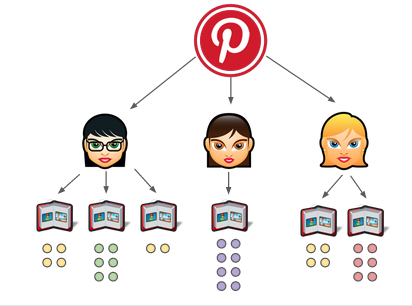Introduction
Time and attention are the priceless assets that shape the value of our existence. In an increasingly commercialised internet space, monetising these assets has significantly impacted both the online experience and subsequently, the human experience. With more than 5 billion people using the internet around the world (Kemp, 2023), the way businesses operate has drastically changed, shifting towards a model of big data collection and targeted advertising for improved ROI and conversion rates.
Vying for the time and attention of users as a form of currency, despite positive offerings of enhanced personalised content and marketing efficiency, the commercial transformation of the internet has also unfortunately brought about as outlined by Bhatt (2019) an attention deficit crisis which is characterized by reduced attention spans and increased susceptibility to distractions. In exploring this issue, a question we should ask concerning the businesses and platforms using our attention is: “How has the commercialization of the internet transformed the way businesses operate, and what are the implications for user well-being in this digital landscape?”
The Internet’s Commercialisation & its Scope
To comprehend the connection between internet commercialization and attention deficiencies, one must first assess its infrastructure and motivations. As discussed by Greenstein (2015), the launch of Netscape Navigator in 1994, a web browser that made the World Wide Web more accessible to the public, helped pave the way for the commercialization of the internet as businesses seized this opportunity of its increased public use by building commercial websites; Thus, giving rise to the online advertising sector in an interactive nature.

From these origins, according to Kim (1998) the internet’s communication infrastructure quickly shifted into a space that was virtually entirely run by private commercial vendors, allowing for unfettered operation of the digital market. As a result of this lack of cohesion under a single vision or funding framework, businesses have sought to gain competitive advantages through innovative marketing strategies to continually engage and influence user attention and there is one crucial component to this—data monetisation.
Today, data is treasured more than ever, and its power in the digital age can be conceptually understood by breaking down the now-common quotation and comparison shared in an article from The Economist Newspaper from 2017 titled “The world’s most valuable resource is no longer oil, but data”. Highlighting the power and value of these resources the phrase paints a picture of their similar purpose and potential as there wouldn’t have been an industrial revolution without oil, and the commercial value of the internet would not have reached its current levels without the possession and monetization of data.
The Role of Data on The Online Experience
Simply expressed, data enabled the employment of data-driven marketing techniques that involve highly targeted advertising and ongoing exposure to promotional material to prolong user engagement (Saur, 2021). Such relentless pursuit of user attention and time has led to higher precision in analytical approaches towards user activities and interactions, and as a result has created a feedback loop where the output of data analysis feeds into the system as a new input—perpetuating the cycle of data driven commercialisation (Van Der Waerdt, 2023). This has allowed for the pushing of individualised content that is determined to be relevant or interesting to internet users, allowing for the effective capturing and maintenance of user attention.
Pinterest: positive benefits of personalised content

Pinterest, a free social networking site, leverages its discovery algorithm, which suggests pins and boards based on information about users’ interests and prior interactions, to show off a tailored user experience. It can be used by users to explore and save ideas, and according to a recent study by Pinterest Business, “Active engagement with inspiring content on Pinterest mitigated the consequences of burnout on people’s daily positive emotions, preserving their capacity to feel good” (Para. 9). As a result, Pinterest has been able to improve user well-being through the targeted curation of ideas that resonate with their interests and passions thanks to the investment in AI data analysis tools (Wired, 2018).
Cognitive Well-being in the Commercialised Digital Age
Globally, individuals aged between 16-34 spend on average seven hours online daily (Statista, 2023). Such an alarming statistic is not without reason, as previously outlined, online businesses have effectively been able to seize the attention and time of users through effective data-driven marketing strategies to prompt behaviours of addiction and distraction.

ADHD & digital consumption
In a study conducted by Ra et. al (2018) in the Journal of the American Medical Association on the association between digital media use and symptoms of ADHD (Attention deficit hyperactivity disorder) in adolescents, they found there was a significant statistically significant association between the two factors. In unpacking these findings, while there may be association, it must be said that the correlation does not imply causation as other factors and variables may be at play, however it does highlight the need for further research and the need for responsible and mindful digital media use among young people to ensure their overall well-being.
Mobile phone addiction as a depressive risk factor
In another research study on phone addiction problems in Chinese University students by Liu & Lu (2022), they discovered that such an addiction in young people serves as a risk factor for the development of depressive symptoms and sleep disturbances. These findings highlight the significant impact on mobile phone addiction as not merely a personal problem but a public health problem. Evidently, understanding the potential consequences of addiction is paramount, underscoring the importance of targeted interventions to promote healthier digital habits to safeguard their mental and physical well-being in an increasingly digital world.
User Protection Through Ethical & Regulatory Responses
As previously mentioned, Kim’s (1998) critique of the beginnings of the commercial internet and its lack of unified vision has evidently resulted in an internet space that falls short in meeting public interest obligations in relation to user well-being and suggests that government’s role should be one of active regulatory engagement. Ethical and regulatory responses to the commercialisation of the internet and user well-being is essential to ensure safe and fair digital environments. Here are some examples of advertising practices and regulatory responses that help users regain control over their digital lives and make more conscious choices on how they engage with online content:
- Transparency in Data Collection: Companies can practice ethical advertising practices by clearly informing users about the data they collect and how it will be used (Aguirre, 2015).
- Data Privacy Laws: Many countries have enacted data privacy laws like GDPR in the EU and CCPA in California. These laws empower users to have more control over their data and require companies to be transparent about data practices
Conclusion
In the ever-evolving landscape of the commercialized internet, the quest to safeguard user well-being stands as an essential mission. As we’ve delved into the intricacies of this digital mousetrap, it becomes abundantly clear that the balance between commerce and well-being is a delicate one.
But amidst this complexity, one thing remains certain: the well-being of users should be at the forefront of our digital endeavours. We’ve explored the infrastructures of the internet, data-driven strategies, and its impact on user-wellbeing as well as existing ethical practices and regulatory responses. It’s a path that requires collaboration, innovation, and a commitment to the greater good.
In the end, safeguarding the time and attention of people in the commercialized internet era is not just a noble goal; it’s a necessity. It’s a call to action for all stakeholders, from tech giants to policymakers to individual users. Together, we can transform this digital mousetrap into a platform that empowers, enriches, and ultimately, prioritizes the well-being of us all.
References
Aguirre, E., Mahr, D., Grewal, D., de Ruyter, K., & Wetzels, M. (2015). Unraveling the Personalization Paradox: The Effect of Information Collection and Trust-Building Strategies on Online Advertisement Effectiveness. Journal of Retailing, 91(1), 34–49. https://doi.org/10.1016/j.jretai.2014.09.005
Bhatt, S. (2019). The Attention Deficit Unintended Consequences of Digital Connectivity (1st ed. 2019.). Springer International Publishing. https://doi.org/10.1007/978-3-030-21848-5
California Consumer Privacy Act (CCPA). State of California – Department of Justice – Office of the Attorney General. (2023, May 10). https://www.oag.ca.gov/privacy/ccpa
GDPR. (2023, September 14). What is GDPR, the EU’s new Data Protection Law?. https://gdpr.eu/what-is-gdpr/
Greenstein, S. (2015). How the Internet Became Commercial: Innovation, Privatization, and the Birth of a New Network (Pilot project. eBook available to selected US libraries only). Princeton University Press,. https://doi.org/10.1515/9781400874293
Kemp, S. (2023, February 8). Digital 2023: Australia – DataReportal – Global Digital Insights. DataReportal. https://datareportal.com/reports/digital-2023-australia
Kim, J.-Y. (1998). Universal service and Internet commercialization: Chasing two rabbits at the same time. Telecommunications Policy, 22(4), 281–288. https://doi.org/10.1016/S0308-5961(98)00021-4
Lane, S. M., & Atchley, P. (Eds.). (2021). Human capacity in the attention economy. American Psychological Association. https://doi.org/10.1037/0000208-001
Liu, M., & Lu, C. (2022). Mobile phone addiction and depressive symptoms among Chinese University students: The mediating role of sleep disturbances and the moderating role of gender. Frontiers in Public Health, 10, 965135–965135. https://doi.org/10.3389/fpubh.2022.965135
Pinterest Business. (2023, September 20). New Research from UC Berkeley shows that Pinterest can help to promote mental health. Pinterest. https://business.pinterest.com/en-au/blog/positivity-research-pinterest-berkeley/
Ra, C. K., Cho, J., Stone, M. D., De La Cerda, J., Goldenson, N. I., Moroney, E., Tung, I., Lee, S. S., & Leventhal, A. M. (2018). Association of Digital Media Use With Subsequent Symptoms of Attention-Deficit/Hyperactivity Disorder Among Adolescents. JAMA: the Journal of the American Medical Association, 320(3), 255–263. https://doi.org/10.1001/jama.2018.8931
Saura, J. R. (Ed.). (2021). Advanced Digital Marketing Strategies in a Data-Driven Era. IGI Global. https://doi.org/10.4018/978-1-7998-8003-5
Statista. (2023). Topic: Internet usage worldwide. Statista. https://www.statista.com/topics/1145/internet-usage-worldwide/#topicOverview
The Economist Newspaper. (2017, May 6). The world’s most valuable resource is no longer oil, but Data. The Economist. https://www.economist.com/leaders/2017/05/06/the-worlds-most-valuable-resource-is-no-longer-oil-but-data
Van De Waerdt, P. (2023). “Everything the Data Touches Is Our Kingdom”: Market Power of “Data Ecosystems.” World Competition, 46(1), 65–98. https://research.rug.nl/en/publications/everything-the-data-touches-is-our-kingdom-market-power-of-data-e
Wired. (2018, November 14). How pinterest uses AI to capture our imaginations. Wired. https://www.wired.com/brandlab/2018/11/pinterest-uses-ai-capture-imaginations/



